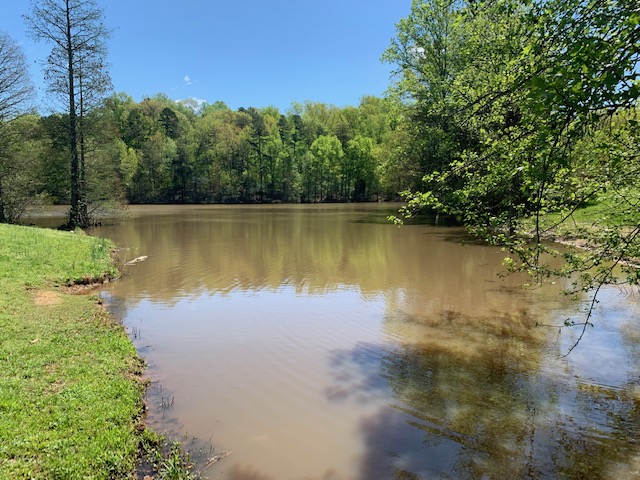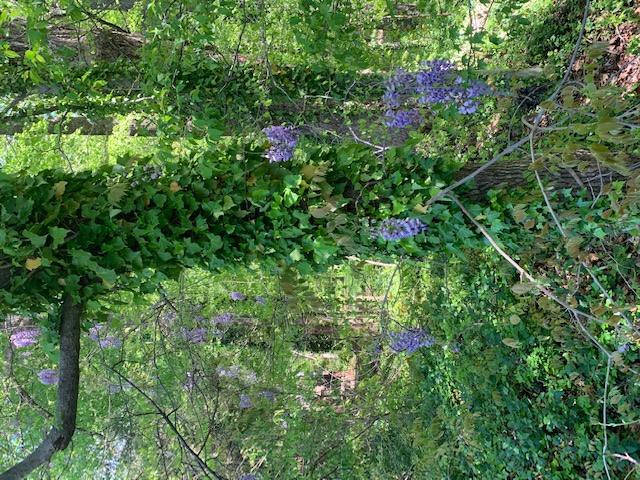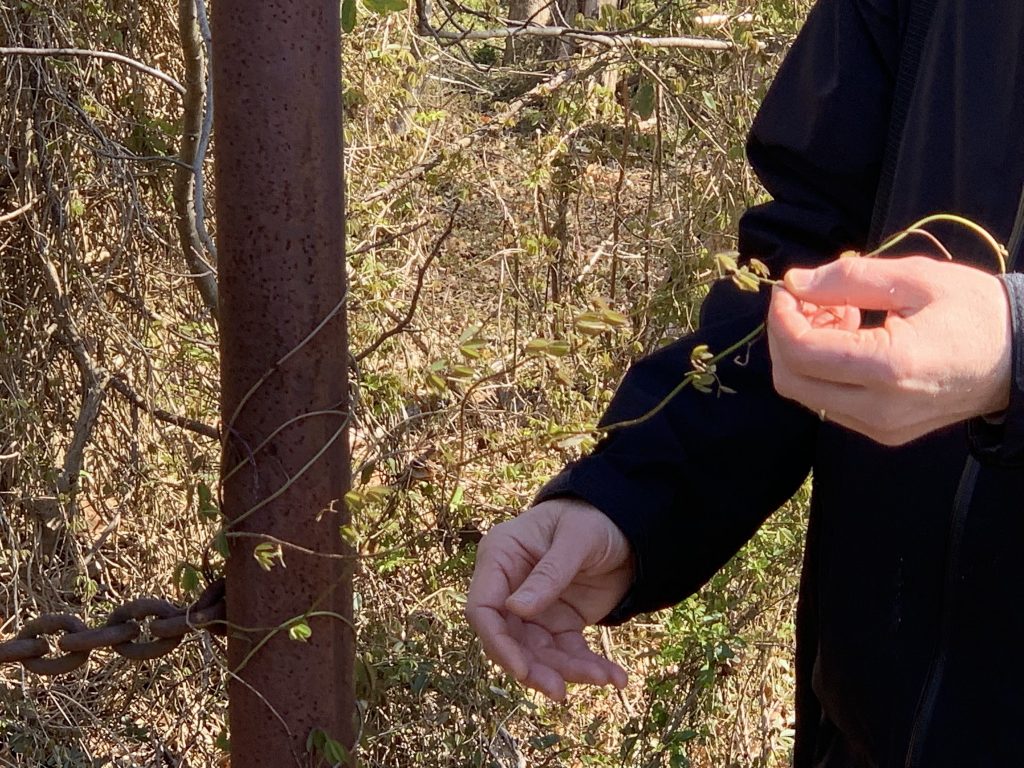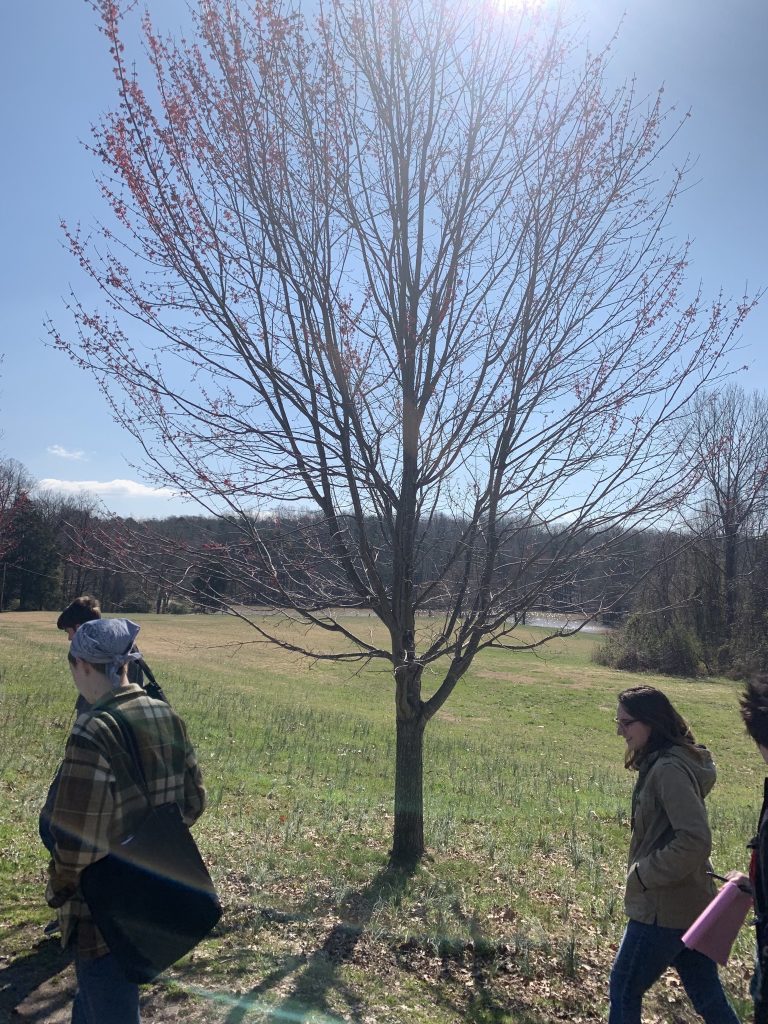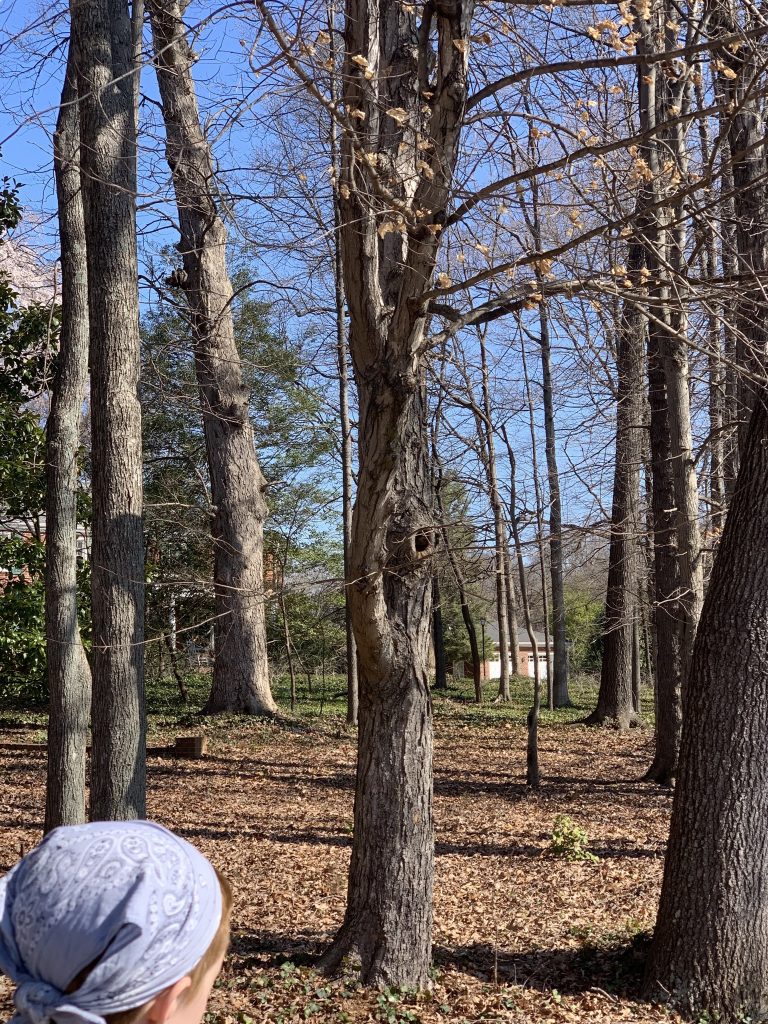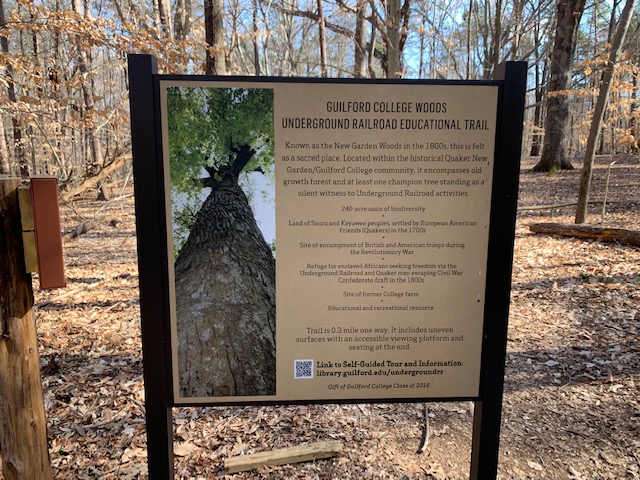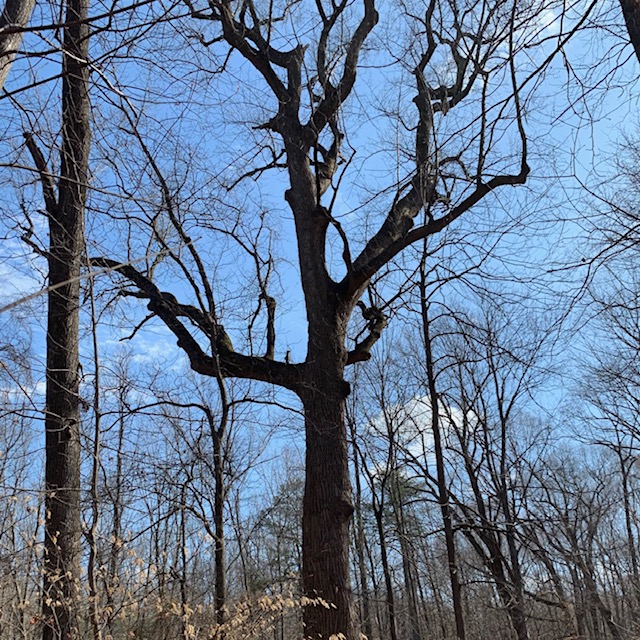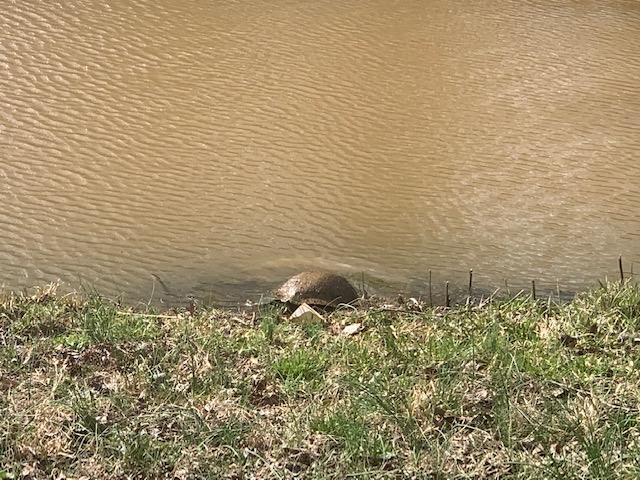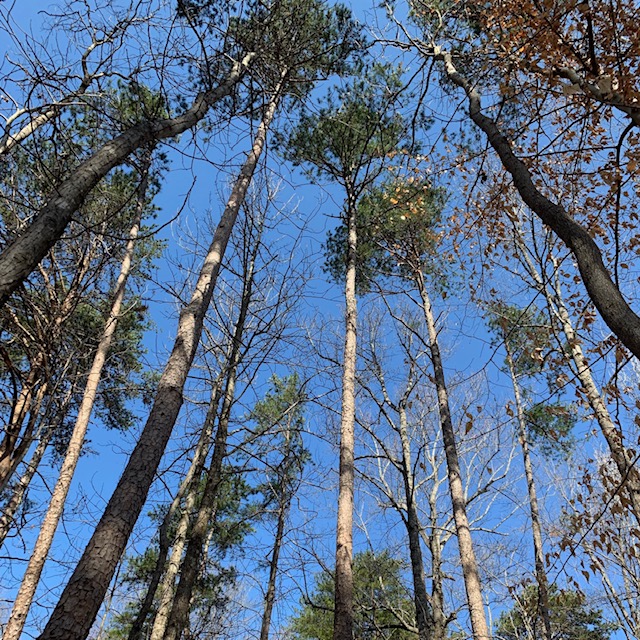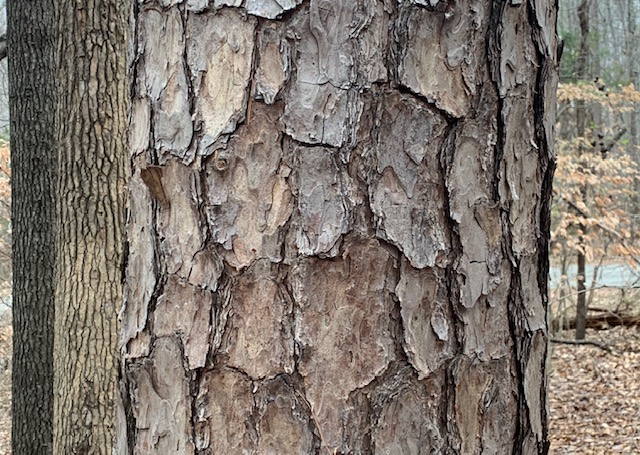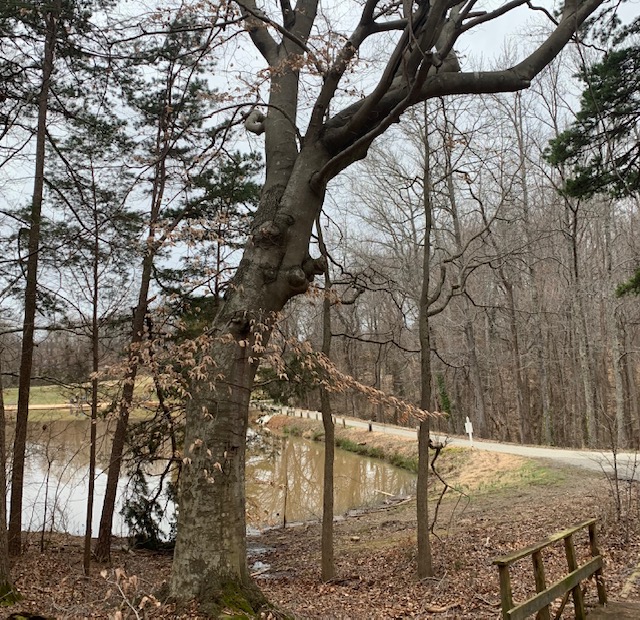My exploration of the Guilford Woods started with a mild sense of disorientation and a much stronger sense of anticipation. Learning about the species within the Guilford Woods taught me the importance of respecting the land and its unique features. Spending time around the Eastern red cedar inspired me to keep coming back, even for short periods of time, to visit and see what was happening in this part of campus.
I believe that the most meaningful way that we can respect the trees and the natural world is by taking the time to understand the tales they have to tell. Even simply looking downwards, the patchwork of littered leaves, twigs, and moss that serve as the forest floor tell a story of their own. Through the identities of the leaves, we learn their names. The lobed oak leaves and elliptical beech leaves introduce themselves as long-term residents, the rocks along the ground hold stories of erosion and movement, and the scattered pine needles speak of the times when they used touched the sky. Not all is peaceful in the world, however. The plants also hold stories of invasion and loss. English ivy, Hedera helix L., tells a story of conquest and threat in which this nonnative intruder compromised native plants and species. Peace, love, war, longing—I may simply be ascribing human emotions to the plants, or we might be failing to recognize the universality of these experiences outside of the human bubble. These entities may not speak our language but we must to make sure their voices are heard and their homes protected.
As I stand here in the woods, a small piece in the larger puzzle of the universe, I hear the signature trisyllabic whistle of the Carolina wren and the sounds of an Eastern gray squirrel scurrying back to warmth. I cannot even imagine how many more birds, insects, and other creatures must come out from hiding in the warmer seasons. It felt as if every being in the woods was seeking shelter from the cold, going into their places of warmth and refuge. Ironically enough, the same place that sustained them kept me shivering at intervals when the cold bursts of wind briefly blew through, and the Sun hid behind his blanket of clouds. While the animals might have been retreating into their homes and places of comfort, being outside in the woods was where I found my own. For a period of time, I failed to connect with my surroundings in a meaningful way. Moving from Michigan to North Carolina meant a drastic shift not only in terms of distance but also in terms of climate and other natural features. I lost my sense of place and my connection to the history and stories of the land, part of the reason why the Guilford Woods resonates with me. It bears the stories of several groups of people that were displaced from their homes and traveled through to their freedom and a place of safety.
I didn’t walk into this experience expecting the different plants and animals to teach me about myself. Somewhere in all the technical terms and sensory experiences, I found my own sense of peace and sense of place. I bonded with the native species that surrounded me, found myself sympathizing with the “invaders” that simply multiplied for the sake of survival. I learned that it’s okay to not know all the answers and trust that eventually you’ll find your way. Guilford College has been nothing more than a campus to me over these past few years but closely observing its distinctive characteristics allowed me to associate with the place as a whole and think of it as home.
The past semester has encouraged me to explore and learn about my home away from home. I hope my journey helped you all learn more about this beautiful place as well!
